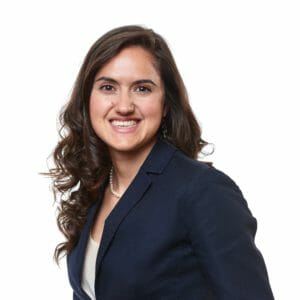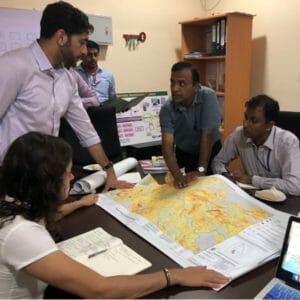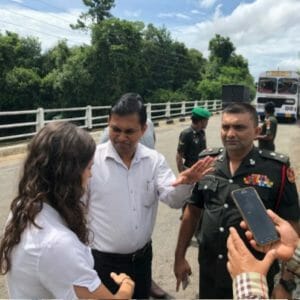Flooding impacts more people than any other natural disaster. Bessie Schwarz, a grassroots environmental and community organizer by training and at heart, is the CEO and Co-founder of Cloud to Street, the leading flood mapping platform designed specifically for governments, humanitarian organisations and insurers in low data environments to effectively respond and prepare for disaster. By harnessing global satellites, advanced science, and community intelligence, the company can monitor worldwide floods in near real-time and remotely analyze local flood exposure at a click of a button. Founded by two women at Yale and seeded by Google, Cloud to Street has been used by governments and companies in almost 20 countries
What challenges face women entrepreneurs?
As a company founded by two women, we’re aware of how difficult it is for women to access the capital needed to start a business. Only 2.2% of venture capital funding goes to women, and for us, having to couple this with raising money for a purpose first organization has presented its share of challenges. Despite the barriers, we have been very lucky to have found amazing funders and social purpose investors in our journey as a start-up. The biggest lesson I’ve learned is to be honest and upfront about the mission and values of your organization when speaking to potential investors. While being uncompromisable in your purpose-first approach to business might deter some funders away, it’ll attract the right people into your network whose values are aligned with your companies, and will ensure that you stay close to your core mission as you grow your business.
What needs were evident which encouraged you to create your company?
As a community organizer, I learned that in times of environmental crisis, all existing social vulnerabilities are heightened. This experience and realization was a driving factor for my co-founder and I when we started Cloud to Street and remains present at the core of our work, which is to remove barriers to life-saving information that would otherwise not exist.
When environmental crises strike it is the most vulnerable, women and girls who feel the brunt of the impact –displacement, poverty, hunger, loss of life, income, and property. Working directly with decision-makers on the ground has allowed us to take a human-centered design approach when building our tools. We listen to our users and customize the tools and support we provide to them based on the unique needs and challenges they face — empowering them to keep the most vulnerable populations among them safe.
How did you build the company?
We had the idea to start Cloud to Street while my co-founder, Beth Tellman, and I were graduate students at the Yale School of Forestry & Environmental Studies. After watching a talk on Google Earth Engine, a remote-sensing cloud-processing platform, we immediately thought about communities that we had worked with during our community organizing days that lacked information about disaster risks. We thought if we could use a cloud-processing platform to get more information about risk to climate-vulnerable communities, it could be a powerful tool for empowering people.
So, she and I started building the Cloud to Street algorithm, and were eventually connected to our first major partners, the World Bank, which kickstarted the business. Since our initial work with the World Bank, we have grown to work in 20 countries to provide governments and global insurers with the necessary data needed to relocate people at risk, rapidly target the distribution of millions of dollars of disaster aid, identify devastating floods, and offer insurance products in new areas.
How do you envision scaling your business to positively impact women?
Over half of the team at Cloud to Street are women, and our leadership team is 75% female. Internationally, we have partnered with incredible women who are local flood managers, first responders, and in technical hydromet offices around the world. Individualized workshops and trainings on flood information systems, coding, remote sensing science build their confidence and capabilities to serve their communities. We have plans to build on this work at a greater scale as we continue to grow as a company.
How does the Cloud to Street advance the UN Sustainable Development Goals (SDGs)?
Every year, flooding affects more people than any other natural hazard, affecting each and every sustainable development goal on multiple and overlapping levels. Destruction of homes, property, infrastructure, businesses, and croplands lead to poverty, hunger, and threatens industry, innovation, and infrastructure. By intervening in every stage of the disaster cycle around catastrophic flooding, Cloud to Street supports good health, education, clean water and sanitation, as well as programs necessary for equality, equity, and relief. Better planning and effective rebuilding from disasters promotes decent work and economic growth, industry, innovation, and infrastructure, and sustainability. Through transparent data sharing and training programs and WhatsApp groups that bring together officials working on flooding by region and watershed, not just country—such as a recent workshop that brought together officials from Egypt, Kenya, Tanzania, Burundi, and Rwanda—we bolster peace and justice strong institutions and partnerships to achieve the goals.


